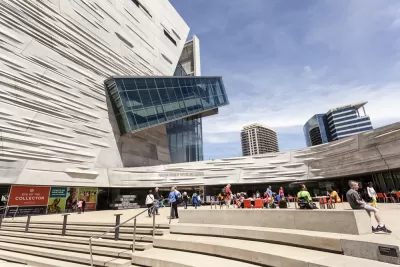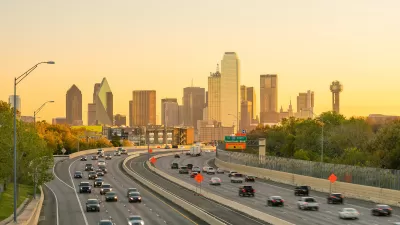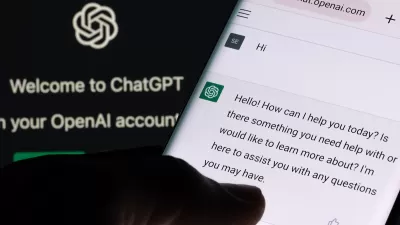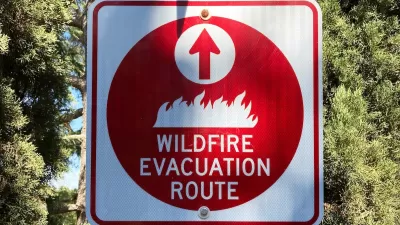Artificial intelligence is being used to generate all kinds of content. Can it successfully replace architecture critics, or does understanding place require physical presence?

After requesting an AI-generated architectural review of the Perot Museum, Mark Lamster, writing in the Dallas Morning News, evaluates the result. Lamster annotates the review with comments, then explains the flaws found in the automatically generated critique.
“To my critical mind, the Perot’s most significant flaw is that it turns its back on the city around it, offering a cold concrete shoulder to the adjacent Arts District. Our computer-generated review suggests just the opposite. Not good.” The review remains glowing, including factual inaccuracies and misunderstandings of the museum’s role in the surrounding neighborhood. As Lamster points out, understanding a building or place requires being there. “But visiting a building in person isn’t possible if the critic isn’t a person at all.”
Because an AI program can’t ‘be there,’ it ends up, like a lazy college freshman, culling what material it can find floating around the internet and regurgitating it in a generic format.”
This may work for public relations, but not for criticism. “Indeed, one of the critic’s essential tasks is to cut through spin, to provide readers with unvarnished, informed opinion, and to do so with a bit of panache.” In Lamster’s opinion, “Of course we all want to be objective (however loaded a term that is, and especially when judging abstract arts), but who wants criticism without personal opinion?”
Ironically, when asked about the limitations of AI-produced critique, ChatGPT nails it, acknowledging its inability to replace, at least for now, human experience and knowledge. The self-awareness of that answer in itself, writes Lamster, “has me worried.”
FULL STORY: Can we replace our architecture critic with a computer? We tried it

Maui's Vacation Rental Debate Turns Ugly
Verbal attacks, misinformation campaigns and fistfights plague a high-stakes debate to convert thousands of vacation rentals into long-term housing.

Planetizen Federal Action Tracker
A weekly monitor of how Trump’s orders and actions are impacting planners and planning in America.

In Urban Planning, AI Prompting Could be the New Design Thinking
Creativity has long been key to great urban design. What if we see AI as our new creative partner?

King County Supportive Housing Program Offers Hope for Unhoused Residents
The county is taking a ‘Housing First’ approach that prioritizes getting people into housing, then offering wraparound supportive services.

Researchers Use AI to Get Clearer Picture of US Housing
Analysts are using artificial intelligence to supercharge their research by allowing them to comb through data faster. Though these AI tools can be error prone, they save time and housing researchers are optimistic about the future.

Making Shared Micromobility More Inclusive
Cities and shared mobility system operators can do more to include people with disabilities in planning and operations, per a new report.
Urban Design for Planners 1: Software Tools
This six-course series explores essential urban design concepts using open source software and equips planners with the tools they need to participate fully in the urban design process.
Planning for Universal Design
Learn the tools for implementing Universal Design in planning regulations.
planning NEXT
Appalachian Highlands Housing Partners
Mpact (founded as Rail~Volution)
City of Camden Redevelopment Agency
City of Astoria
City of Portland
City of Laramie





























